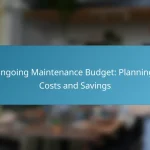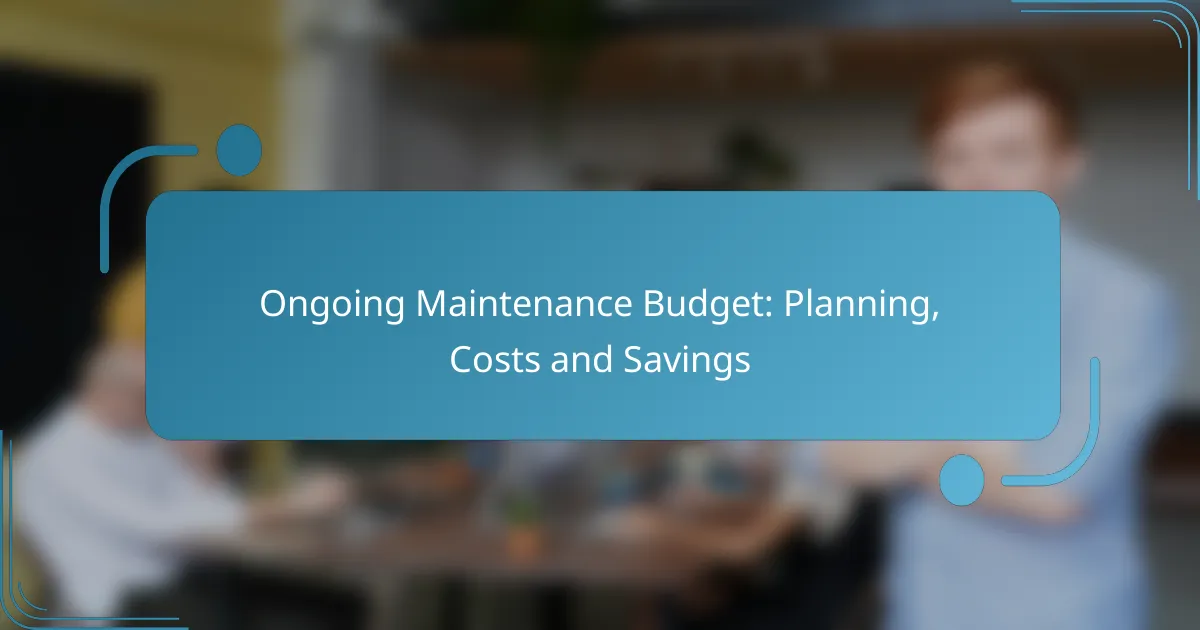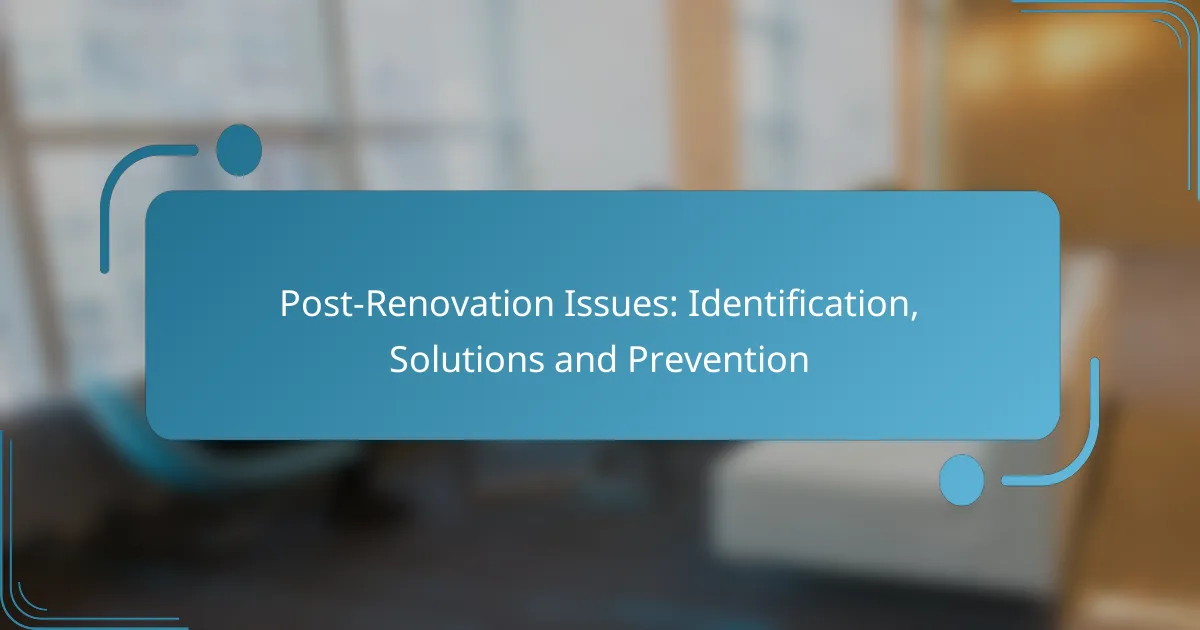Ongoing maintenance budgeting is essential for organizations aiming to optimize resource allocation and manage costs effectively. By establishing a baseline budget and regularly reviewing expenses, businesses can anticipate future costs and minimize unexpected financial burdens. Incorporating best practices such as contingency funds and maintenance management software further enhances the budgeting process, ultimately leading to significant savings and improved asset longevity.

What are the best practices for ongoing maintenance budgeting?
Best practices for ongoing maintenance budgeting include establishing a baseline budget, regularly reviewing expenses, incorporating contingency funds, utilizing maintenance management software, and engaging with financial advisors. These strategies help organizations effectively allocate resources and anticipate future costs.
Establishing a baseline budget
Establishing a baseline budget involves assessing historical maintenance costs to create a reliable starting point. This budget should reflect regular maintenance needs, emergency repairs, and any anticipated upgrades. A common approach is to allocate a percentage of the total asset value, often ranging from 1% to 4% annually, depending on the industry.
Consider documenting all maintenance activities over the past few years to identify trends and seasonal variations. This data can inform your baseline and help you adjust for any expected changes in operations or asset utilization.
Regularly reviewing expenses
Regularly reviewing expenses is crucial for maintaining an accurate budget. Schedule quarterly or biannual reviews to compare actual spending against the baseline budget. This practice allows you to identify discrepancies and adjust forecasts as necessary.
During these reviews, categorize expenses into routine maintenance, unexpected repairs, and capital improvements. This categorization helps pinpoint areas where costs can be optimized or where additional funding may be needed.
Incorporating contingency funds
Incorporating contingency funds into your maintenance budget is essential for managing unforeseen expenses. A typical recommendation is to set aside 5% to 10% of the total maintenance budget for emergencies. This reserve can cover unexpected repairs or urgent upgrades without disrupting planned expenditures.
Ensure that the contingency fund is easily accessible and clearly defined in your budget. This clarity helps stakeholders understand its purpose and encourages responsible spending practices.
Utilizing maintenance management software
Utilizing maintenance management software can streamline budgeting and tracking processes. These tools help automate data collection, schedule maintenance tasks, and generate reports on spending trends. By leveraging technology, organizations can gain insights into their maintenance needs and costs more efficiently.
When selecting software, look for features that allow for budget tracking, forecasting, and integration with existing financial systems. This integration will enhance visibility and control over maintenance expenditures.
Engaging with financial advisors
Engaging with financial advisors can provide valuable insights into effective maintenance budgeting strategies. Advisors can help analyze financial data, identify cost-saving opportunities, and recommend best practices tailored to your organization’s needs. Their expertise can be particularly beneficial when planning for large-scale projects or significant asset purchases.
Consider establishing a regular consultation schedule with your financial advisor to ensure ongoing alignment between maintenance needs and financial goals. This proactive approach can help mitigate risks and enhance overall budget management.
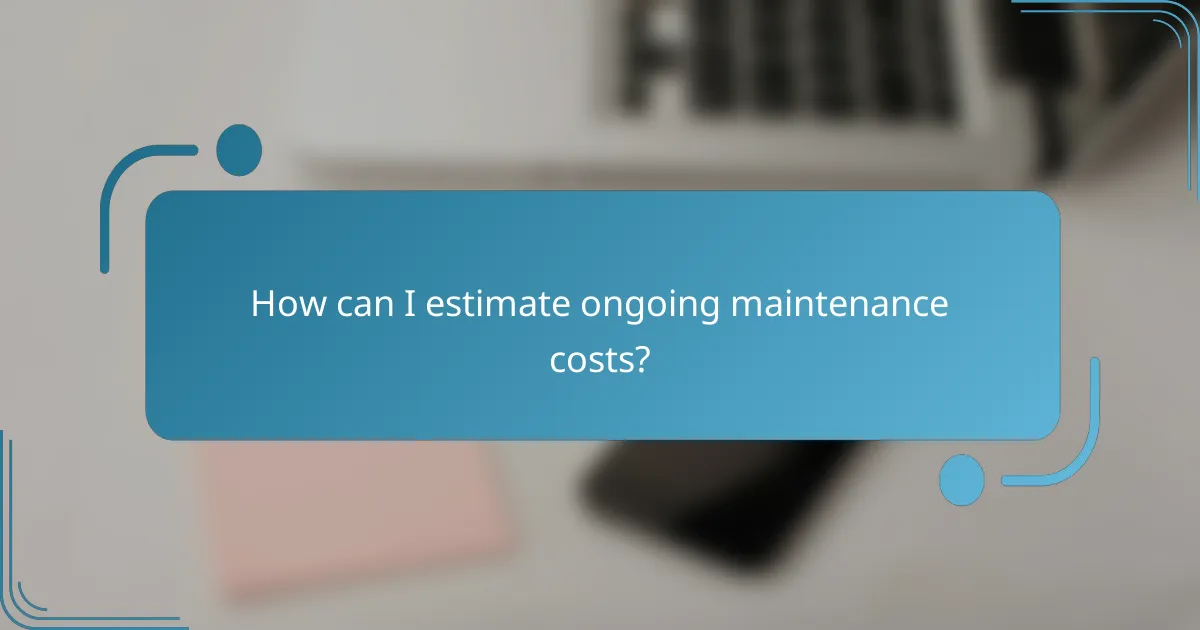
How can I estimate ongoing maintenance costs?
Estimating ongoing maintenance costs involves analyzing various factors, including historical data, asset lifecycles, and labor and material expenses. This comprehensive approach helps create a realistic budget that can adapt to changing conditions and ensure efficient asset management.
Analyzing historical maintenance data
Reviewing historical maintenance data is crucial for estimating future costs. Look at past expenses related to repairs, routine maintenance, and unexpected breakdowns to identify trends and patterns. This analysis can reveal average costs per asset type, helping to forecast future maintenance budgets.
Consider categorizing the data by asset type, age, and maintenance frequency. This segmentation allows for more precise predictions and highlights areas where costs may be rising, prompting proactive measures to mitigate expenses.
Considering asset lifecycle costs
Asset lifecycle costs encompass all expenses associated with an asset from acquisition to disposal. This includes initial purchase costs, ongoing maintenance, operational costs, and eventual replacement or disposal expenses. Understanding these costs helps in making informed decisions about asset management and budgeting.
To estimate lifecycle costs, utilize models that project expenses over time, factoring in depreciation and potential resale value. This approach can reveal the total cost of ownership and guide investment decisions, ensuring that maintenance budgets align with long-term financial goals.
Factoring in labor and material expenses
Labor and material expenses are significant components of ongoing maintenance costs. Calculate labor costs based on hourly wages and the estimated time required for maintenance tasks. Additionally, consider the costs of materials needed for repairs or routine upkeep, which can vary widely depending on the asset type and market conditions.
To manage these expenses effectively, establish relationships with suppliers for better pricing on materials and consider training staff to reduce reliance on external contractors. Regularly review labor efficiency and material usage to identify opportunities for cost savings.
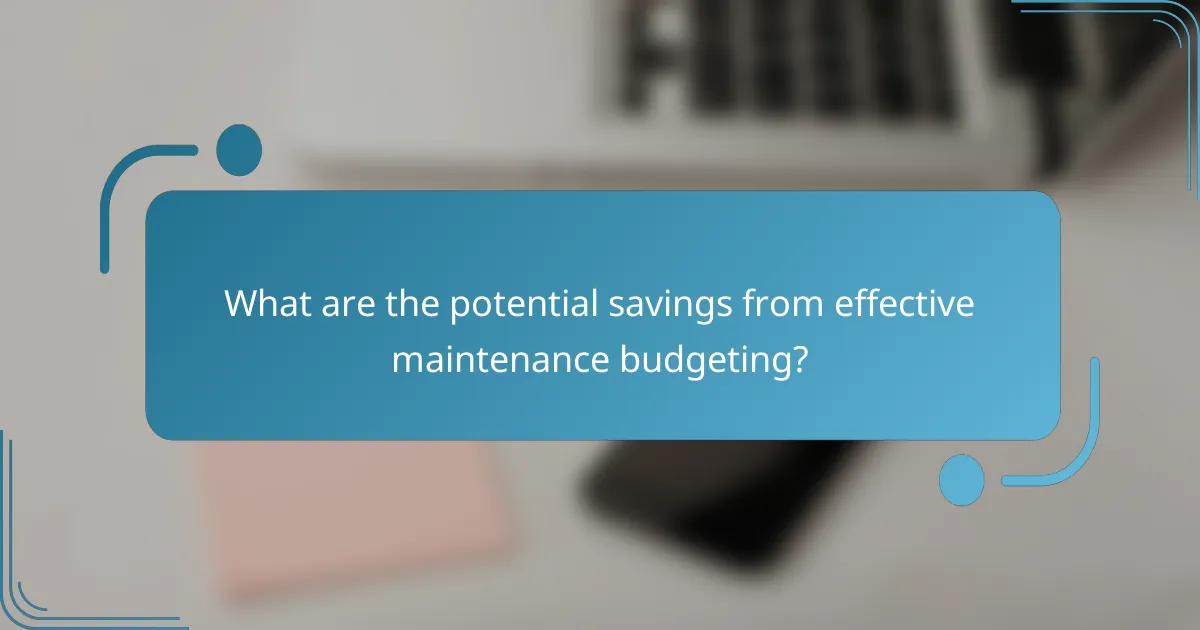
What are the potential savings from effective maintenance budgeting?
Effective maintenance budgeting can lead to significant savings by minimizing unexpected costs and optimizing resource allocation. By planning for regular maintenance, organizations can avoid the financial strain of emergency repairs and enhance the longevity of their assets.
Reducing emergency repair costs
One of the primary benefits of effective maintenance budgeting is the reduction in emergency repair costs. When maintenance is planned and executed regularly, the likelihood of sudden breakdowns decreases, which can save organizations thousands of dollars in urgent repairs.
For example, a manufacturing facility that invests in routine equipment checks may prevent costly failures that could halt production. Setting aside a budget for preventive maintenance can lead to savings of 20-30% compared to reactive maintenance strategies.
Extending asset lifespan
Proper maintenance budgeting contributes to extending the lifespan of assets. Regular upkeep ensures that equipment and facilities operate efficiently, reducing wear and tear over time. This proactive approach can significantly delay the need for costly replacements.
For instance, a fleet of delivery trucks that undergoes regular servicing can last several years longer than those that are neglected. Organizations can expect to see a return on investment through lower replacement costs and improved asset utilization.
Improving operational efficiency
Effective maintenance budgeting enhances operational efficiency by ensuring that all systems are functioning optimally. When equipment is well-maintained, it operates at peak performance, which can lead to increased productivity and reduced downtime.
For example, a well-maintained HVAC system can lower energy costs by operating more efficiently, potentially saving businesses hundreds of dollars monthly. Establishing a clear maintenance budget allows organizations to allocate resources effectively, ensuring that all critical systems are serviced on time.
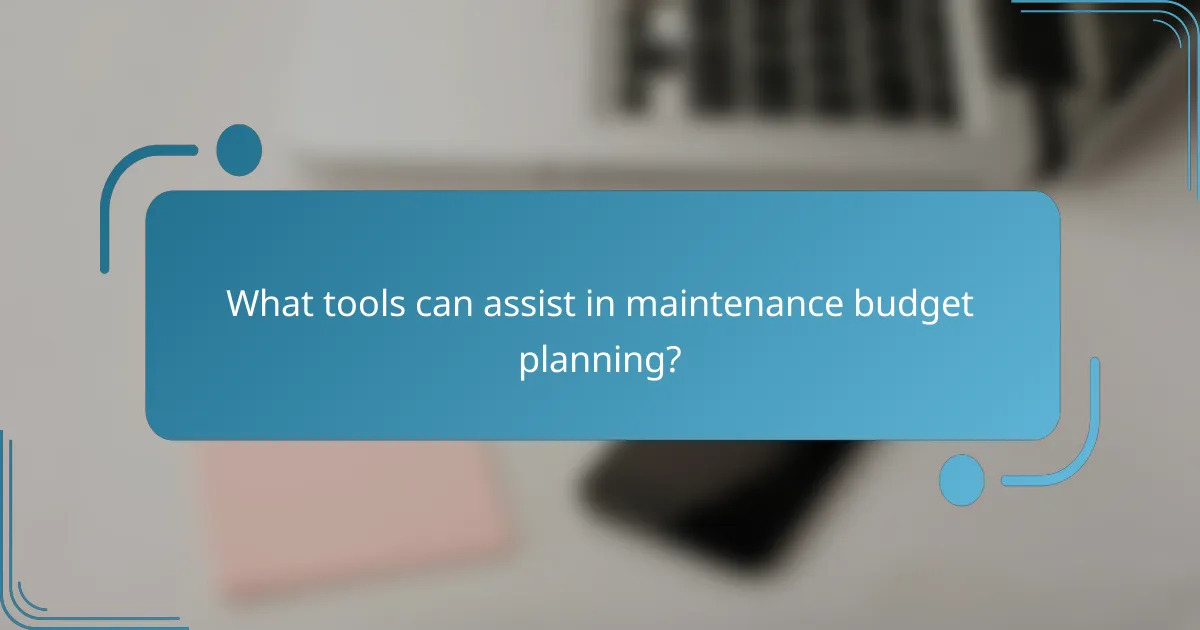
What tools can assist in maintenance budget planning?
Several tools can significantly enhance maintenance budget planning by providing structured data management, forecasting capabilities, and templates for tracking expenses. Utilizing these tools can lead to more accurate budgeting and better resource allocation.
CMMS software options
Computerized Maintenance Management Systems (CMMS) streamline maintenance operations and budgeting. These platforms help track work orders, inventory, and maintenance schedules, allowing for more accurate forecasting of costs. Popular options include Fiix, Hippo CMMS, and Maintenance Connection, which offer various features tailored to different organizational needs.
When selecting a CMMS, consider factors such as ease of use, integration capabilities, and customer support. A well-chosen CMMS can improve efficiency and reduce unexpected maintenance costs, ultimately benefiting your budget.
Budgeting templates
Budgeting templates provide a straightforward way to outline and manage maintenance expenses. These templates can be customized to fit specific needs, including categories for labor, materials, and equipment. Many organizations use Excel or Google Sheets for this purpose, as they allow for easy adjustments and calculations.
When using templates, ensure they are regularly updated to reflect actual spending and forecasted expenses. This practice helps in identifying trends and making informed decisions about future budget allocations.
Financial forecasting tools
Financial forecasting tools help predict future maintenance costs based on historical data and trends. These tools can range from simple spreadsheet models to sophisticated software like QuickBooks or SAP, which offer advanced analytics and reporting features. Accurate forecasting can lead to better financial planning and resource allocation.
To effectively use forecasting tools, gather comprehensive historical data and regularly review assumptions. This approach can help mitigate risks associated with unexpected expenses and ensure that budgets remain aligned with organizational goals.
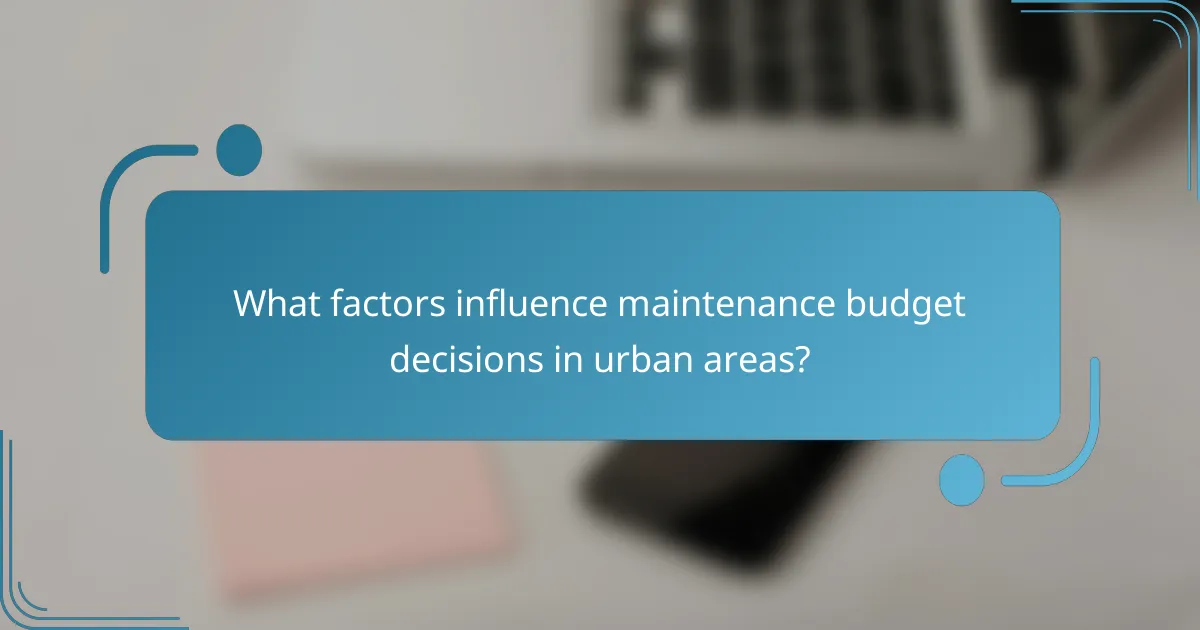
What factors influence maintenance budget decisions in urban areas?
Maintenance budget decisions in urban areas are influenced by various factors including local labor costs, regulatory compliance requirements, and the specific needs of the infrastructure. Understanding these elements helps in creating a realistic and effective budget that ensures ongoing maintenance and operational efficiency.
Local labor costs
Local labor costs are a significant factor in determining the maintenance budget. These costs can vary widely depending on the region, with urban areas typically experiencing higher wages due to the cost of living. For example, hourly rates for skilled labor can range from $20 to $50 or more, depending on the trade and location.
When planning a maintenance budget, it is essential to account for potential fluctuations in labor costs. Seasonal demand, labor shortages, and local economic conditions can all impact pricing. It’s advisable to build in a contingency of 10-15% to accommodate these variations.
Regulatory compliance requirements
Regulatory compliance requirements play a crucial role in shaping maintenance budgets in urban areas. Local, state, and federal regulations often dictate specific standards for safety, environmental impact, and operational efficiency. Compliance with these regulations can lead to additional costs, such as hiring specialized contractors or obtaining necessary permits.
To effectively manage these costs, it is important to stay informed about current regulations and anticipate changes that may affect maintenance practices. Regularly reviewing compliance requirements can help in budgeting for necessary upgrades or modifications, ensuring that the maintenance budget remains aligned with legal standards.


